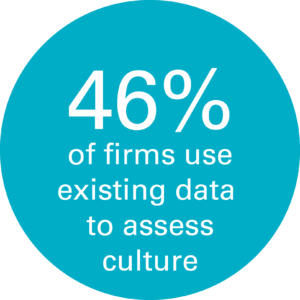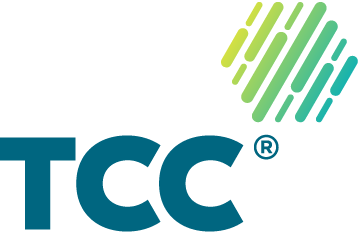Are the answers to your culture questions hiding in plain sight?
From complaints data to T&C records, there’s a wealth of valuable data circulating around your business. More often than not, this is already being harnessed to inform conduct risk MI. That’s nothing new – the FCA is, after all, a conduct regulator and most businesses are pretty used to collecting this sort of MI as part and parcel of their risk management framework.
But what many firms we speak to don’t realise is that much of the information they’ve already collected is potentially useful for their culture change programmes, particularly when combined with more qualitative data you can get from sources like employee insights and systems intelligence as part of a holistic culture assessment.
In fact, less than half of businesses are currently using their existing business MI to assess culture.

In our experience, this is usually because the MI isn’t being interrogated through a culture lens. By that we mean that a firm’s thinking might be stuck in ‘conduct risk’ mode, monitoring specific data to defend against exceptional cases of misconduct. While this is necessary work, in recent years the FCA’s focus has shifted towards the broader concept of culture — the thing that, ultimately, embeds good behaviour and conduct as the norm.
Here at TCC, we encourage all our clients to think in this way too. Re-examining your conduct risk MI through a culture lens can expose a whole host of cultural indicators, giving senior managers what they need to make more informed and effective decisions on culture.
So, where are these cultural indicators lurking?
There’s many sources you can choose from, most of which you’ll already be utilising for other purposes. These include:
How can you unlock the insight you need?
The next step is to utilise this data in the best way possible. This is often easier said than done, so here’s just a few things to remember:
- Connect all the pieces of the puzzle
Combining this information with data from other methods, such as employee insights, systems intelligence or external sources, like Glassdoor reviews, allows you to begin to see the impact that your behaviours, business processes and strategy have on your clients and business. Assessing all sources of data and intelligence side-by-side is essential for achieving a holistic, validated view of culture.
- Capture live data
It’s easy to get lost in masses of data. For that data to provide real value and positively impact your culture change project, it needs to be continuously updating to capture real-time changes in behaviour.
- Consider your skills gaps
Processing and analysing this data can be time-consuming and overwhelming, particularly for businesses who don’t have access to specialists or experienced data analysts. This is where technology like intelligent culture analytics can be invaluable, speeding up the analysis process and making it so much easier to interrogate what the data is telling you.
Ultimately, this kind of investment will pay dividends — firms that focus on building and maintaining a healthy culture are more likely to be attune to consumer preferences, meet their needs and become more commercially successful as a result. Your existing business MI, combined with other powerful sources of culture intelligence, plays a huge part in achieving that.
Culture change made simple
Book a demo to see how our tech can supercharge your culture assessments






